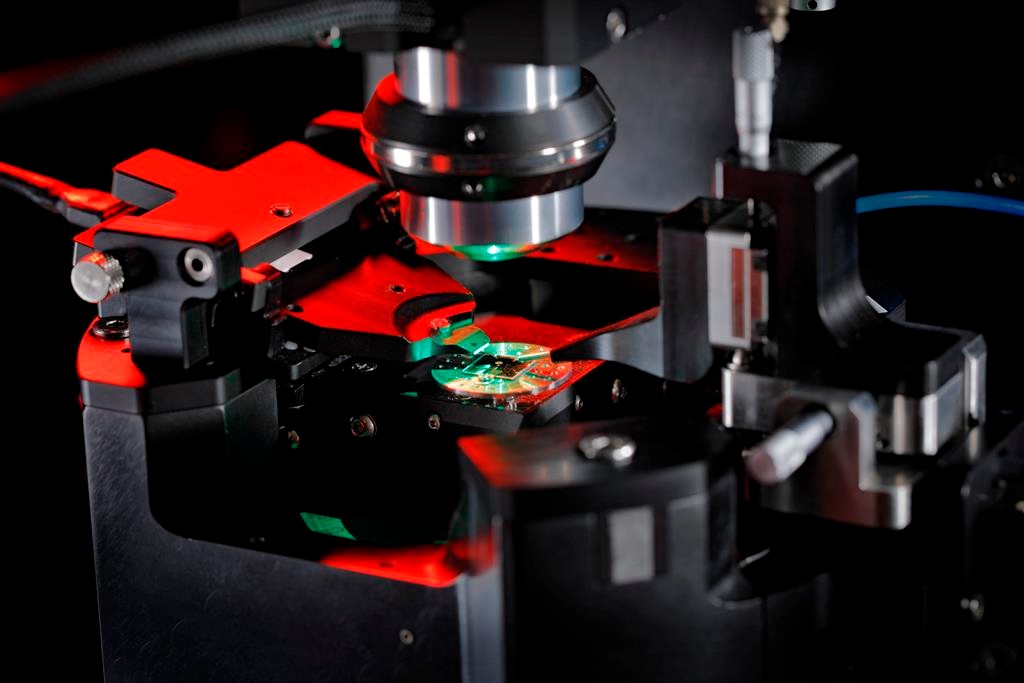FREIBURG, Germany, April 18, 2021 — Researchers from six Fraunhofer institutes are working on two projects that aim to make quantum magnetometers — sensor devices that measure magnetic field — usable in industrial settings. Magnetometers are currently limited in such settings due to the complexity of their operation. Additionally, their spatial resolution is too low for many applications.
Fraunhofer Institute for Applied Solid State Physics (IAF) is participating in both projects. The institute develops quantum magnetometers that are based on diamond material and are able to detect magnetic fields with a spatial resolution of a few nanometers, down to a single electron and nuclear spins. The physical material properties of diamond quantum magnetometers enable them to operate at room temperature, which is suitable for industrial applications.
Including researchers from five additional Fraunhofer institutes, the Fraunhofer IAF team is working on the Quantum Magnetometry (QMag) project. The project aims to develop sensors that can image tiny magnetic fields with unprecedented spatial resolution and sensitivity, and at room temperature.
By 2024, the partners plan to develop magnetometers for industrial use in nanoelectronics, chemical analysis, and materials testing.
The collaborators are testing two systems that are based on the same physical measurement principles and methods. One is an imaging scanning probe magnetometer based on nitrogen vacancy (NV) centers in diamond. The magnetometer is designed for precise measurements of nanoelectronic circuits. The second approach involves measurement systems based on ultrasensitive optically pumped magnetometers that support applications in materials testing and process analytics.
The researchers said they developed microlenses as well as synthesized magnetic nanoparticles that are introduced into the diamond sensor tips used in the first of the two systems to further optimize the tips in terms of accuracy and efficiency.
The focus of the second project involves medical diagnostics. Fraunhofer IAF is leading this work, called NV-doped CVD Diamond for Ultra-Sensitive Laser Threshold Magnetometry (DiLaMag). A team is researching the development of an extremely sensitive sensor that can measure the weak magnetic fields of the activities of the human heart and brain, for example. Such a sensor could be used to detect diseases at an early stage.

Three projects, including two with Fraunhofer IAF, aim to make magnetometric sensing more accessible to industrial and academic users. Courtesy of Fraunhofer IAF.
The researchers intend for this magnetic field sensor to also work at room temperature, as well as in existing background fields — which would make it practicable for clinical implementation, DiLaMag project leader Jan Jaske said.
Participating Fraunhofer institutes will present the QMag project in the World of Quantum at LASER World of PHOTONICS April 26-29.
Heriot-Watt Instrument Boosts Access to Quantum Materials R&D
At Heriot-Watt University in Scotland, a £2 million ($2.6 million) award by the Engineering and Physical Sciences Research Council, part of UK Research and Innovation, to the university’s Institute of Photonics and Quantum Sciences will boost research on novel quantum materials made from single sheets of atoms that offer new functionalities compared to traditional materials, such as silicon.
Heriot-Watt will use the funding to create a quantum magnetometer at its Edinburgh campus. The Heriot-Watt team will use the instrument to study magnetism in nanomaterials at extremely low temperatures. The team hopes its work will lead to the development of novel materials to build electronic devices with improved memory storage and information capabilities compared to those that currently exist.
The facility will also be open to external users, said Christian Bonato, principal investigator on the project from Heriot-Watt’s School of Engineering and Physical Sciences. The Quantum Magnetometer Facility is expected to be fully operational next year.